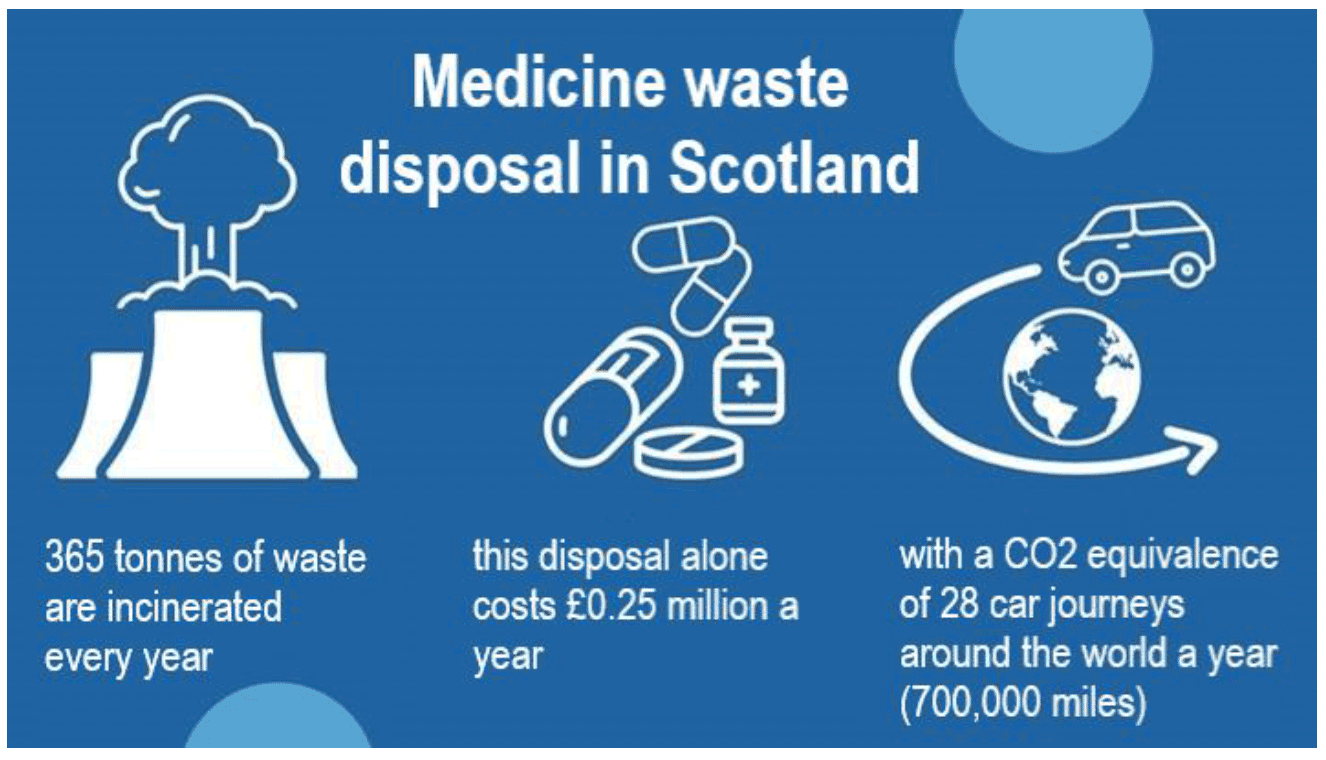Respiratory conditions - quality prescribing strategy: improvement guide 2024 to 2027
Respiratory conditions are a major contributor to ill health, disability, and premature death – the most common conditions being asthma and COPD. This quality prescribing guide is designed to ensure people with respiratory conditions are at the centre of their treatment.
4. Polypharmacy
Person-centred respiratory prescribing
Medication is by far the most common form of medical intervention for many acute and chronic conditions with around 280,000 items prescribed every day in Scotland, with around 21,000 items for respiratory medicines.[12] The term polypharmacy means “many medications” and is defined to be present when a patient takes two or more medications. Pharmacological therapy can be highly effective in preventing disease or slowing disease progression, with guidelines for single diseases recommending the use of a variety of evidence-based medicines. However, there is often a mismatch between prescribing guidelines for specific medical conditions and the range of clinical complexity found in individuals. It is important to note that polypharmacy is not necessarily a bad thing, it can be both rational and required.
To ensure outcomes from medication are optimised, and prescribing is appropriate and safe, the 7-Steps medication review process provides a clear structure for both the initiation of new and the review of existing treatments, and places an emphasis on ‘what matters to the individual’? A polypharmacy review (following the 7-Steps approach) should ensure optimal management of respiratory and other conditions. It should include addressing aggravating lifestyle factors and consideration of the most appropriate medication at the right dose, with regular review. The following 7-Steps are intended as a guide to structure the review process.
Step 1: Aim: What matters to the patient?
Step 2: Need: Identify essential drug therapy.
Step 3: Need: Does the patient take unnecessary drug therapy?
Step 4: Effectiveness: Are therapeutic objectives being achieved?
Step 5: Safety: Is the patient at risk of ADRs or suffers actual ADRs?
Step 6: Sustainability: Is therapy cost-effective and environmentally sustainable?
Step 7: Person-centred: Is the person willing and able to take therapy as intended?
The 7-Steps to appropriate polypharmacy demonstrate that the review process is not in fact a linear single event, but cyclical, requiring regular repeat and review (see Figure 1 above). The circle is centred on what matters to the individual, ensuring they are provided with the right information, tools and resources to make informed decisions about their medicines and treatment options. It should be used at both initiation and review of medicines.
This is outlined in the Scottish Government’s Polypharmacy guidance[5] with accredited Polypharmacy training available on TURAS for prescribers (three points of external CPD by Royal College of Physicians, United Kingdom). The training equips healthcare professionals (including doctors, nurses and pharmacists) to undertake comprehensive person-centred medicines reviews. The training can be accessed at NHS Education for Scotland on TURAS learn. Find more information on the iSIMPATHY website.
Environmental impact of polypharmacy and healthcare
Over-prescribing is commonplace, accounting for at least 10% of all prescribed medications. It is estimated that up to 18% of unplanned hospital admissions are attributed to harm from medicines.[5] About half of these admissions are deemed to be preventable, through methods such as effective medicine review, following the 7-Steps polypharmacy review process.
The healthcare industry is increasingly asked to account for the negative environmental impact generated through providing medical care. In Scotland, every 10 days a 10-tonne truck of medicines waste (returned to community and hospital pharmacies) is transported for incineration. These are the associated costs for incineration; travel costs and the environment impact (see Figure 3 below) in addition to the direct costs of the unused medication.
Reduction of medicines waste can be achieved by ensuring appropriate prescribing and initiation of medicines, regular person-centred medication reviews and deprescribing where appropriate.
Reducing waste from medicines has a double carbon benefit by
- reducing upstream emissions e.g. in distribution
- downstream emissions, with fewer medicines to be disposed of
Medicines that are disposed of in general waste, poured down the sink or flushed down the toilet, increase the risk of environmental harm and may enter the human food chain in trace amounts.[13] Residues from medicines which are unused, not properly disposed of, or from those that pass through the body, can be found in water, soil and sludge and in organisms at all stages of their lifecycles. Further information is available using the SEPA data visualisation tool for Pharmaceuticals in the Water Environment.[14] With regard to inhalers, any remaining propellant gas in metered dose inhalers can be safely destroyed by incineration, which avoids it leaking into the atmosphere.
Unused or unwanted medicines should be returned to community pharmacy for safe disposal or recycling where available.

Contact
Email: EPandT@gov.scot
There is a problem
Thanks for your feedback